A staggering 75% of individuals identify a brand through its logo. The logo is an emblem of a brand's identity - a sort of shorthand. You want to make the right first impression in your potential customers' minds.
Crafting a memorable logo design may seem daunting, but it doesn’t have to be as challenging as you expect. Achieving the perfect logo simply requires following a series of straightforward steps.
As you progress through these steps, you'll discover that the process is far less intimidating than you first thought. Without further ado, let’s look at those essential elements of logo design.
Take the Time to Brainstorm Ideas
Before you choose your logo fonts and colors, it’s essential to brainstorm different ideas when you’re creatively charged and write them down in one place.
Once you jot down your ideas, leave them and let them marinate. Return 24 hours later with an open mind and see what new ideas emerge.
The brainstorming process will give you the time to move forward thoughtfully, rather than jumping in with both feet and relying on your first idea.
Tell Your Brand Story
With your ideas organized in your mind and on paper (or digitally), it’s time to decide how you want to tell your brand story through your logo design.
Ask yourself these questions before starting the design process:
- What does my brand stand for?
- Who's my target audience?
- How do I want my target market to perceive my brand?
- What emotions do I want to evoke through my logo?
You'll have a clearer direction once you have the answers to all these questions. These answers will also guide you through the rest of the custom logo design process.
Less Is More
At this point in the logo design process, things get more interesting and creative. You have your research, brainstorming, and storytelling ideation out of the way. Now, you can sit down, put pencil to paper (or mouse to design tool), and create something extraordinary for your brand.
However, one important thing to remember before getting started: simplicity is the cornerstone of effective logo design.
The power of simplicity makes your logo easy to see and remember. A cluttered and complex logo can make your brand look unappealing and dilute its identity.
Think about some of the most iconic logos in the world — McDonald’s, Airbnb, Pepsi, or Nike — all are beautifully simple. Their elegance lies in their minimalism, making them instantly recognizable.

McDonald's
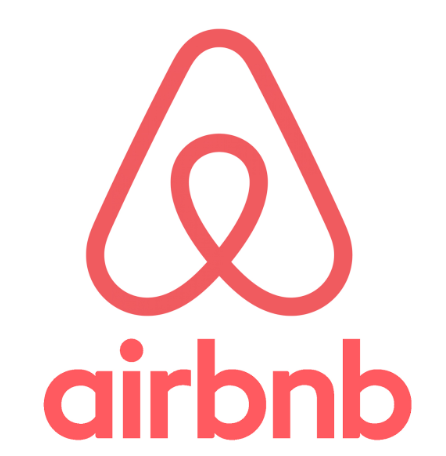
Airbnb
As you can see, you don’t have to overdo the colors in your logo. (Some top-tier brand designs use monochromatic or two-color palettes.) Additionally, try not to use more than two fonts.
The result? A clear and simple brand logo that’ll impress your potential customers.
Keep It Relevant (and Consistent)
Your logo should reflect your brand's identity, values, and commitment to diversity and inclusion. Do this by choosing the right fonts and colors. When your target audience sees your logo, the design should instantly convey your mission.
A perfect example of this is Form Health, a telemedicine company offering weight loss solutions. The strategic use of orange in their logo design reflects the essence and mission of their brand, which is to promote lasting wellness.
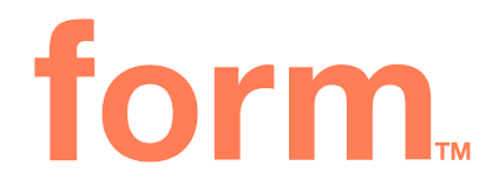
Image Source
Like them, many brands feature orange logos, as they evoke feelings of vitality and energy. Its relevant color makes it a perfect fit for Form Health, which wants to convey health and vibrancy (and unleash a zest of creativity).
Form Health also does a stellar job using this color throughout its branding elements.
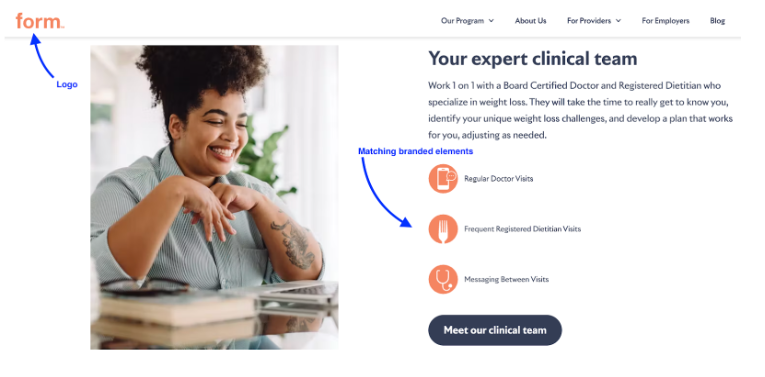
Image Source
These small details matter. It helps curate a cohesive brand image. And adds an element of professionalism.
People like to do business with trustworthy brands. It’s as simple as that.
Select the Right Color Palette
Colors carry intricate meanings, serving as conduits for emotions, ideas, and values that resonate deeply with individuals. This phenomenon is known as color psychology. Hence, choosing the ideal logo color demands thoughtful deliberation. It’s like using a contact enrichment API, but here you’ll search for the right colors for your logo.
This applies to any industry. For example, a community college may incorporate a particular color (such as blue) across its branding and marketing materials. This is because in graphic design, bright blue catalyzes sentiments of loyalty, trust, confidence, security, and authoritative reliability.
Blue generally envelops broader notions of freedom, intuition, imagination, inspiration, and sensitivity. Upon closer examination, the choice of blue emerges as a great decision for an educational institution.
This color selection should also resonate with values and concepts that individuals aspire to align themselves with.
Choose an Appropriate Font
The right font adds personality to your brand. It’s one of the main elements that makes your brand instantly recognizable (and stands out from the crowd). Therefore, you must carefully consider selecting the right font for your logo.
Should it be elegant, playful, modern, or traditional? Ask yourself these questions and answer them with your brand identity and target market in mind.
Custom fonts can make your logo unique, but standard fonts can also work wonders when applied creatively. Keep in mind that clarity trumps cleverness.
So, before you select a daring font that could turn your logo into a catastrophe, consider opting for standard fonts that are easily recognizable and can make your logo look nice and simple.
Use Symbolism and Imagery
Adding meaningful symbols or imagery to your logo can make it more memorable and distinctive. The symbols could carry associations or cultural significance that enhance your brand's identity.
For example, the Apple logo cleverly incorporates an apple with a bite taken out of it — a simple yet effective symbol that has become synonymous with innovation.
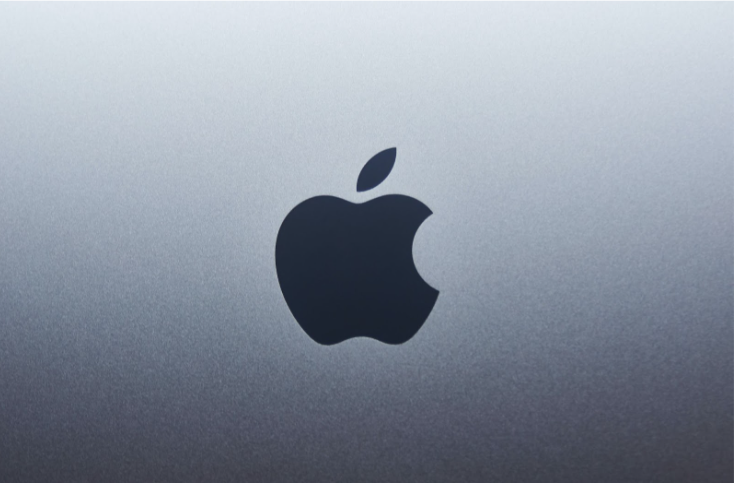
Make it Versatile
A logo should look great, whether on a massive billboard or a tiny social media profile picture.
Vector graphics ensure your logo is on point and that your pictures are of high quality. Unlike pixel-based images, these vector files don’t blur when scaled up or down.
When scaled down, a complex logo may lose its details, while a well-designed, simple logo remains recognizable in all sizes. Think about how your logo will appear on various applications, from business cards to websites.
The more versatile your logo, the better. That way, you can build that brand recognition you crave and save time and money by creating multiple versions of your logo.
Check Black and White Compatibility
When designing a business logo, it's easy to let yourself loose in the process (and with creative juices flowing) and steer off course. But sticking to the basics works wonders in creating a timeless logo.
For instance, does your logo have black and white compatibility? A great logo should work equally well in black and white backgrounds.
This extra measure ensures your logo remains usable even when color isn't an option (such as faxed documents or newspaper advertisements). Testing your logo in black and white helps you test for timelessness.
Use the Right Tools
You can’t achieve the right end product without the right tools in your arsenal. Here’s where a background remover always comes in handy. As business owners, the right tools will make it easier to use any image you want, as you can remove any unwanted backgrounds. You'll be able to create unique design logos from any photos.
Apart from a background remover, if you want a professional logo design (but lack graphic design experience), use a tool with pre-built logo templates.
Design.com’s logo maker helps you instantly generate polished, professional-quality logos from a vast library of over 1.5?million handcrafted templates, tailored to your business name and keywords.
After selecting your favorite design, you can fully customize fonts, colors, layouts, and formats. Then download high-res PNG/JPG or scalable SVG/EPS/PDF files with transparent backgrounds and unlimited edits.
Check out some sample logos below:

Eco Leaf Plant by Design.com
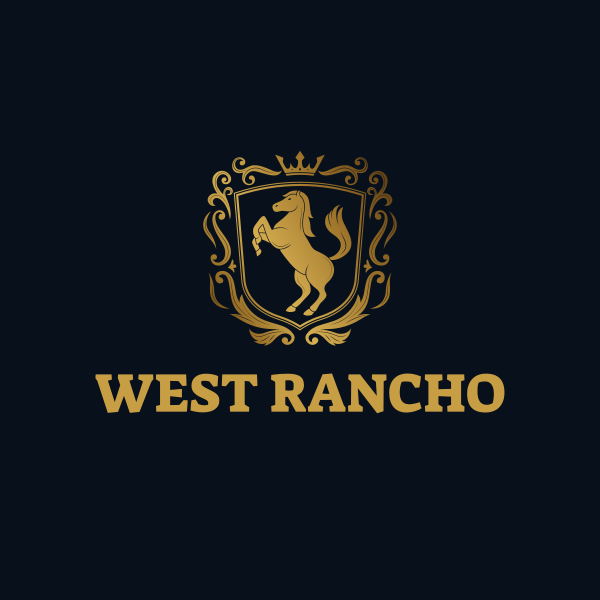
Classic Royal Crest Horse by Design.com
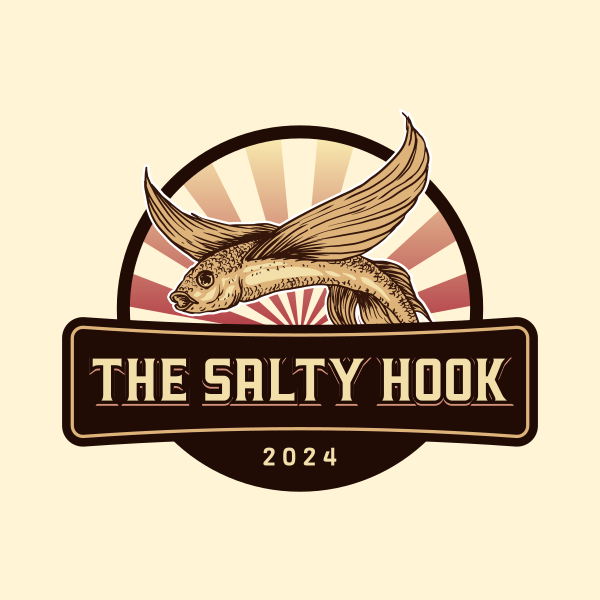
Vintage Flying Fish by Design.com
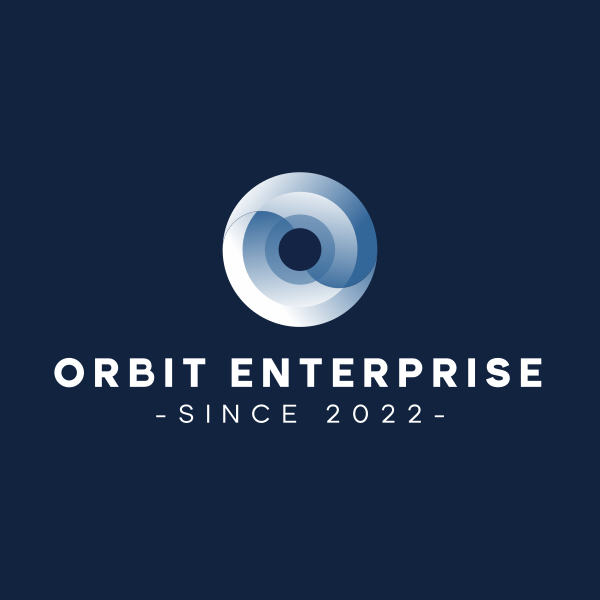
Business Firm Letter O by Design.com

Cupcake Lady Chef by Design.com
In three simple steps, you can create a custom logo for your business (and it’s free). What’s not to love?
Be Unique and Original
It goes without saying that you can never achieve the extraordinary if you only create replicas of existing designs.
You need to make something of your own to stand out and make your mark in a world filled with similar logos. As we mentioned earlier, your logo should convey your brand's story. Be unique and authentic.
Avoid clichés and generic designs that can easily be confused with other brands. Avoid clichés and generic designs that can easily be confused with other brands. Insert: Modern logo design also benefits from considering contemporary values like diversity and inclusion in visual representation, ensuring your brand speaks to a broader audience and reflects current social awareness. A distinctive logo will make a lasting impression and help consumers remember your brand.
Final Words
A memorable business logo is one of the most crucial elements in brand recognition. There’s a reason McDonald’s, Apple, and Nike are some of the most recognizable brands in the world.
While numerous design tools and resources are available to create a professional-looking logo for your business, perfecting a logo design remains a challenging task.
If you’d prefer to have someone in your corner (or to have someone take over the task entirely), a professional designer from DesignCrowd can do the heavy lifting for you. In just a few days, you’ll have a custom, professionally designed logo that perfectly fits your business and brand.
So what are you waiting for?
Written by DesignCrowd on Friday, August 1, 2025
DesignCrowd is an online marketplace providing logo, website, print and graphic design services by providing access to freelance graphic designers and design studios around the world.

